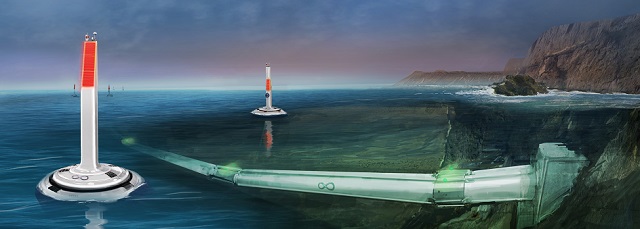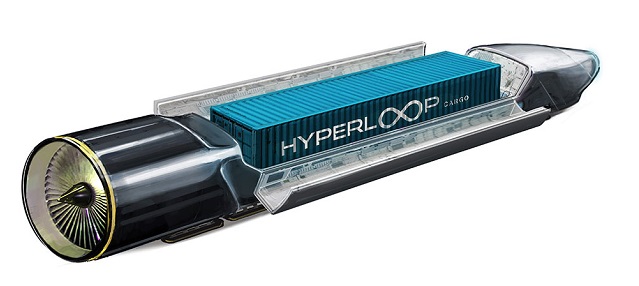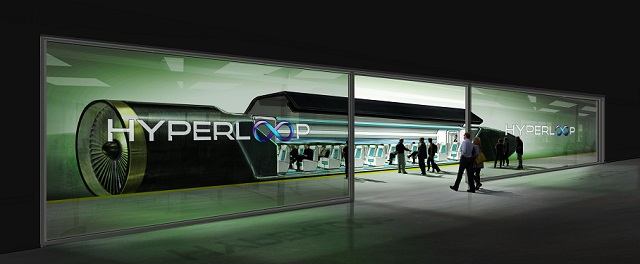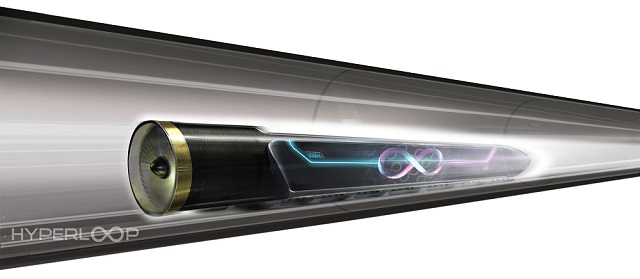Ports Might be First for Hyperloops
Hyperloop One, a Los Angeles company working to develop the futuristic transportation technology, has announced the closing of $80 million in financing and said it plans to conduct a full system test before the end of the year.
A Hyperloop would whisk passengers and cargo in pods through a low pressure tube at speeds of up to 750 miles per hour (1,207 km per hour). It has been likened to a mix between the Concorde plane, a rail gun and an air-hockey table.
Early applications could center around ports – possibly replacing the trucks and trains that carry cargo from ships to factories and stores. Some anticipate that it could start operation in Los Angeles, close to some of the biggest port in the U.S.

Hyperloop One builds off a design by Tesla and SpaceX CEO Elon Musk, who has suggested it would be cheaper, faster and more efficient than high speed rail projects, including the one currently being built in California.
A test of the Hyperloop One system was conducted on Wednesday when a car-sized sled powered by electromagnets rocketed to more than 100 miles (160 kph) an hour through the Nevada desert.The sled began on a train track and then was rocketed to 105 miles per hour by electromagnets as electricity was shot into copper coils. After a short ride, the sled ran into a sand trap, sending out silicon sprays. If all goes according to plan, sleds will levitate and carry pods in a test later this year. Gigantic tubes already are scattered around the Las Vegas area test site.
Maglev technology would levitate the pods to reduce friction in the system, which would be fully autonomous and electric powered. Magnetic fields in the tunnel will lift the pod before a “thrust force” is applied, which will then accelerate it to speeds of up to 1230km/h. When the same force is applied for breaking the pod, the system’s battery is recharged through regenerative braking.
Using such a passive levitation system would eliminate the need for power stations along the Hyperloop track, and if any type of power failure occurs, Hyperloop pods would continue to levitate and only after reaching minimal speeds touch the ground, says the company.
 The open source technology would, according to the initial "Alpha" design released in 2013, enable travel from the Los Angeles region to the San Francisco Bay Area in 35 minutes, meaning that passengers would traverse the proposed 569 kilometer (354 mile) route at an average speed of just under 962 km/h (598 mph) and a top speed of 1,223 km/h (760 mph).
The open source technology would, according to the initial "Alpha" design released in 2013, enable travel from the Los Angeles region to the San Francisco Bay Area in 35 minutes, meaning that passengers would traverse the proposed 569 kilometer (354 mile) route at an average speed of just under 962 km/h (598 mph) and a top speed of 1,223 km/h (760 mph).
Hyperloop One CEO Rob Lloyd likened hyperloop technology to the emergence of the U.S. railroad system and the era of prosperity it ushered in.
Lloyd also announced a competition to determine where the first Hyperloop One system should be built, with an announcement expected next year.

Executives in Hyperloop One, formerly known as Hyperloop Technologies, include Shervin Pishevar, a venture capitalist well known for his investments in innovative companies like Uber and Airbnb, and Brogan BamBrogan, a former SpaceX engineer.
New investors include 137 Ventures, Khosla Ventures, Fast Digital, Western Technology Investment (WTI), SNCF, the French National Rail Company, a force behind high speed rail in Europe, and GE Ventures.
BamBrogan said the company's engineering team is focused on finding efficiencies to reduce the cost of building a hyperloop.

Hyperloop One has competition including Hyperloop Transportation Technologies, a crowdsourced company that last month signed an agreement with the Slovakian government to build a hyperloop connecting Slovenia with Austria and Hungary.
Skeptics say real-world challenges ranging from construction permits to making the new technology work mean the costs are likely to be far greater.
"The hyperloop might be promising, but it's still unproven and just an idea. High-speed rail is a proven technology that's been in use around the world for decades," said Lisa Marie Alley, a spokeswoman with the California High Speed Rail Authority.
A hyperloop, she said, will run into the same challenges of any other large infrastructure project, including funding, right of way, environmental permits, approvals and clearances. "None of it is easy," she said.

that matters most
Get the latest maritime news delivered to your inbox daily.
Alon Levy, a mathematician who writes about mass transit for the blog Pedestrian Observations, said the cost estimates from hyperloop backers do not fully take into account difficulties such as engineering turns at jet speed or even digging tunnels.
"I do think Hyperloop can be built. But making it work requires much more money than the builders think, and much more than conventional high-speed rail," he said.
